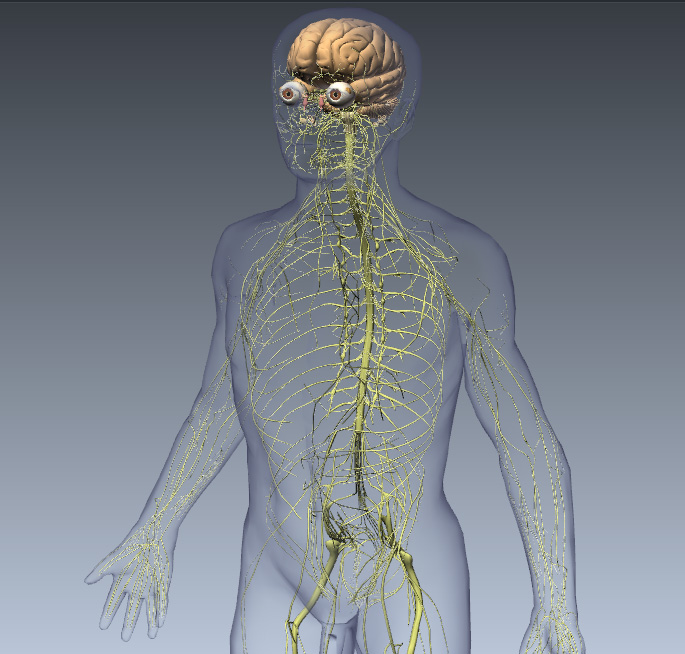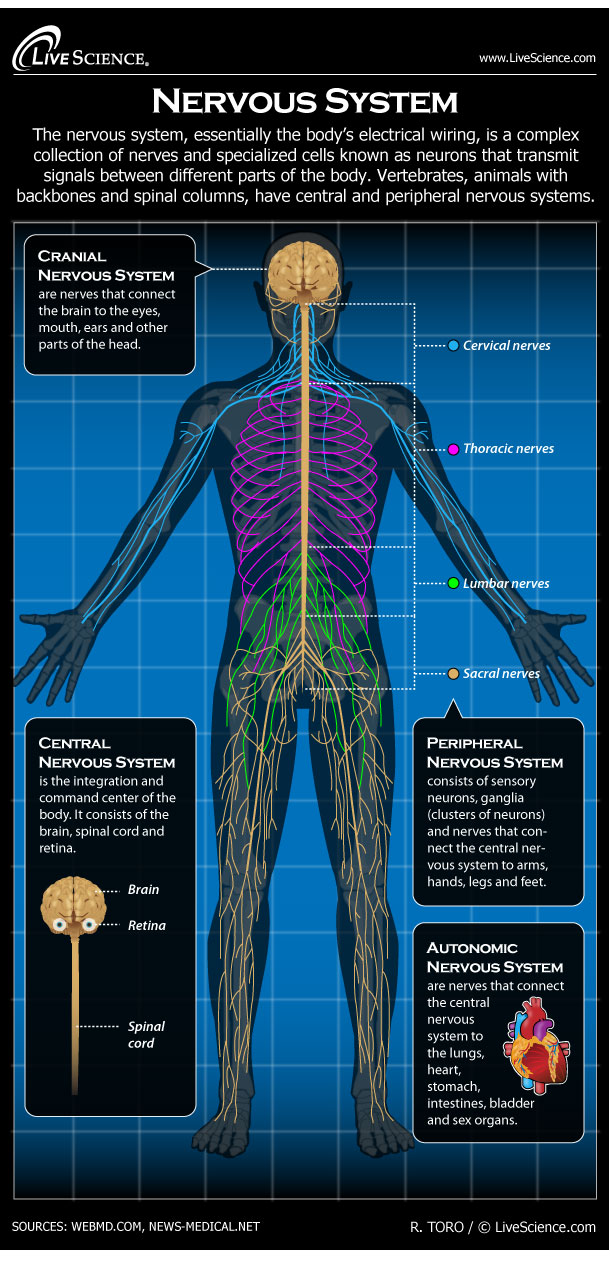Spinal Cord Injury: Levels, Symptoms & Treatment

A spinal cord injury (SCI) is damage to any part of the spinal cord, the bundle of nerves that runs from the brain down the vertebral column, or disease.
"Spinal cord injury is basically any trauma to the spinal cord that interrupts the flow of [electrical] information from the brain to wherever the nerves are going," said Dr. Salvatore Insinga, chief of neurosurgery at Southside Hospital in Bay Shore, New York.
The injury can prevent motor signals from reaching the muscles, resulting in paralysis, or sensory information from reaching the brain. "It’s a two-way conduit," Insinga told Live Science.
Incidence
The occurrence of spinal cord injury among survivors is about 40 cases per million in the United States, or about 12,000 new cases per year, according to a 2013 report by the National Spinal Cord Injury Statistical Center (NSCISC). An estimated 273,000 people are living with spinal cord injury in the United States, in a range from 238,000 to 332,000.
About 80 percent of spinal cord injuries reported to the national database happen in men. Nearly half of all injuries occur in young people between the ages of 16 and 30, but the average age of injury has steadily increased since the 1970s, to 42.6 years since 2010.
Causes
Motor vehicle accidents account for 36.6 percent of spinal cord injuries since 2010, followed by falls (28.5 percent), violence (14.3 percent), sports (9.2 percent), and other or unknown causes (11.4 percent), according to the NSCISC.
SCI usually starts with a sudden blow to the spine that fractures or dislocates the vertebrae, the discs of bone in the spine. The fragments of bone, discs or ligaments bruise or tear the spinal cord, crushing the nerves, according to the National Institutes of Health. During the weeks following the injury, bleeding, swelling, inflammation and fluid buildup in or near the spinal cord often cause further damage.
Diseases such as arthritis, cancer, inflammation, infections or degeneration of spinal discs can also result in a spinal cord injury, according to the NIH. Depending on the severity of the injury, the victim may make a full recovery or become completely paralyzed.
Types of injury
Spinal cord injuries vary in their location and severity. The "level" of injury refers to the lowest part of the spinal cord with normal function. Higher-level injuries affect the arms, hands, trunk, legs and pelvic organs, whereas lower-level injuries affect only the legs, pelvic organs, and trunk, according to the NIH. These can result in paralysis of all four limbs (known as quadriplegia or tetraplegia), or paralysis of the lower limbs (known as paraplegia).
The severity of the injury is classified as either complete, in which nearly all movement and sensation below the level of the injury is lost, or incomplete, in which some residual movement and sensation remains.
Symptoms
Symptoms of spinal cord injury include: loss of movement; loss of sensation (sense of touch, heat or cold); loss of bowel or bladder control; exaggerated reflexes or spasms; changes in sexual function or sensitivity; pain or stinging due to nerve damage; and difficulty breathing, coughing, or clearing the throat.
Emergency symptoms of an injury include severe pain or pressure in the neck, head or back; weakness, lack of coordination or paralysis of part of the body; numbness, tingling or loss of feeling in the hands and feet; loss of bladder or bowel control; difficulty walking or balancing; difficulty breathing after the injury; or a twisted neck or back. People with these symptoms should seek immediate medical attention.

Treatment
Treatment options for spinal cord injury are limited, but rehabilitation and experimental technologies have been found to help maintain or improve remaining nerve function in some people.
Immediately after an accident, emergency responders immobilize the spine using a stiff neck collar and carrying board in order to transport the patient.
Maintaining blood pressure is critically important after an injury, Insinga said, because "the spinal cord heals better when it has blood flow." A drop in blood pressure can be catastrophic, because it can extend the damage beyond where it started, he said.
Other emergency treatment involves maintaining breathing ability, preventing shock, keeping the neck immobilized, and preventing complications such as blood clots.
In some patients, steroid medications, such as methylprednisolone (Medrol), have been found to cause mild improvement, if taken within eight hours of injury. However, high doses of steroids can have negative side effects such as bone loss or low blood sugar.
Doctors may use traction (often by attaching metal braces and weights to the skull to prevent it moving) to stabilize the spine and/or realign it. Surgery may be needed to remove fragments of bone, herniated discs, fractured vertebrae or foreign objects, or to stabilize the spine to minimize pain or future deformity.
"If a piece of bone or spinal cord is under pressure, relief of that pressure is of utmost importance," Insinga said.
After initial treatment, the patient will typically begin a program of rehab.
Rehabilitation
A team of therapists and specialists work with patients during their early stages of recovery. Physical therapists focus on having the patient maintain and strengthen existing muscle function, while occupational therapists, rehab psychologists and others help the patient learn basic tasks and new skills.
Modern technology for paralysis can provide some independence to individuals living with spinal cord injury. Assistive equipment includes wheelchairs, computer adaptations, electronic aids, robotic gait training and electrical stimulation.
An experimental technique known as epidural spine stimulation has helped a small number of patients regain the ability to flex their toes and ankles in a pilot study.
Robotic exoskeletons have been used in studies for rehabilitation, allowing some patients to sit or stand upright and take a few steps, with assistance. Researchers are also developing neural prostheses, known as brain-computer interfaces. Electrodes worn on the scalp or implanted in the brain record electrical signals from neurons and translate them into control of a computer or prosthetic limb.
These technologies are still in their early stages, however, and not approved for widespread use.
Follow Tanya Lewis on Twitter and Google+. Follow us @livescience, Facebook & Google+.
Additional resources
- The National Institute of Neurological Disorders and Stroke offers this information: "Spinal Cord Injury: Hope Through Research."
- Find help and support at the National Spinal Cord Injury Association.
- Learn about care and treatment of spinal cord injuries at the Mayo Clinic.
Sign up for the Live Science daily newsletter now
Get the world’s most fascinating discoveries delivered straight to your inbox.











